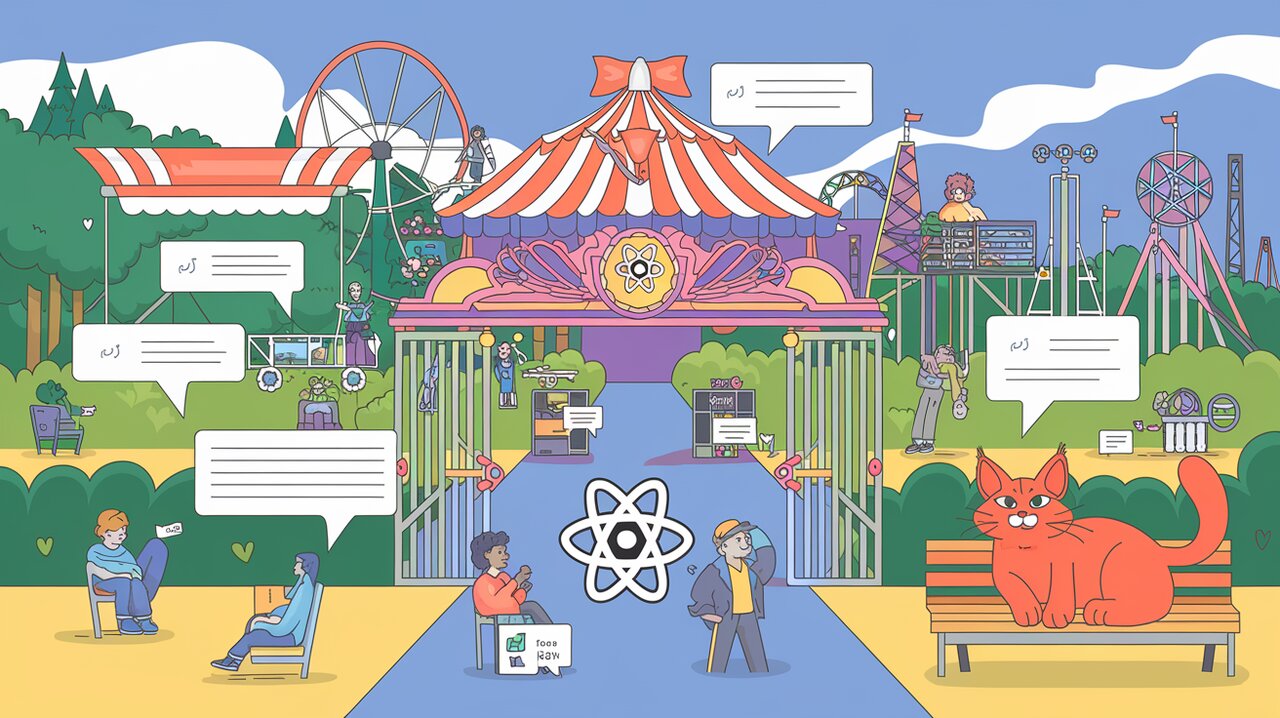
React Joyride: Your App's Personal Tour Guide
React Joyride is a powerful library that transforms the way users interact with and learn about your React application. By providing an intuitive way to create guided tours, it helps showcase your app’s features, explain new functionality, and improve the overall onboarding experience for your users.
Features
React Joyride comes packed with a variety of features that make it a versatile tool for creating engaging user tours:
- Customizable Steps: Define a series of steps to guide users through your application.
- Flexible Positioning: Automatically position tooltips and highlights around target elements.
- Responsive Design: Adapts to different screen sizes and orientations.
- Keyboard Navigation: Allows users to navigate through the tour using keyboard controls.
- Custom Styling: Easily customize the appearance of tour components to match your app’s design.
- Callbacks: Provides hooks for various events during the tour, allowing for fine-grained control.
- Accessibility: Built with accessibility in mind, ensuring all users can benefit from the tour.
Installation
To get started with React Joyride, you’ll need to install it in your React project. You can do this using npm or yarn:
Using npm:
npm install react-joyride
Using yarn:
yarn add react-joyride
Basic Usage
Let’s dive into how you can implement a simple tour using React Joyride.
Setting Up the Tour
First, import the Joyride component and set up your tour steps:
import React, { useState } from 'react';
import Joyride, { Step } from 'react-joyride';
const App: React.FC = () => {
const [steps] = useState<Step[]>([
{
target: '.my-first-step',
content: 'Welcome to our app! This is where you can see your dashboard.',
},
{
target: '.my-second-step',
content: 'Here you can manage your profile settings.',
},
{
target: '.my-third-step',
content: 'And this is where you can create new projects.',
},
]);
return (
<div>
<Joyride steps={steps} />
{/* Your app components */}
</div>
);
};
In this example, we define an array of steps, each targeting a specific element in your app and providing content for the tooltip. The Joyride component is then added to your app, passing the steps as a prop.
Controlling the Tour
You might want to have more control over when the tour starts or how it behaves. Here’s how you can achieve that:
import React, { useState } from 'react';
import Joyride, { CallBackProps, Status } from 'react-joyride';
const App: React.FC = () => {
const [steps] = useState([
// ... your steps here
]);
const [run, setRun] = useState(false);
const handleJoyrideCallback = (data: CallBackProps) => {
const { status } = data;
if ([Status.FINISHED, Status.SKIPPED].includes(status)) {
setRun(false);
}
};
return (
<div>
<button onClick={() => setRun(true)}>Start Tour</button>
<Joyride
steps={steps}
run={run}
continuous={true}
showSkipButton={true}
callback={handleJoyrideCallback}
/>
{/* Your app components */}
</div>
);
};
This setup gives you more control over the tour. The tour only starts when the user clicks the “Start Tour” button, and it stops when the tour is finished or skipped.
Advanced Usage
React Joyride offers several advanced features for creating more dynamic and interactive tours.
Custom Components
You can customize the look and feel of your tour by providing custom components:
import React from 'react';
import Joyride from 'react-joyride';
const CustomTooltip = ({ index, step, tooltipProps }) => (
<div {...tooltipProps}>
<h2>{step.title}</h2>
<p>{step.content}</p>
<footer>Step {index + 1} of 3</footer>
</div>
);
const App: React.FC = () => {
const steps = [
// ... your steps here
];
return (
<div>
<Joyride
steps={steps}
tooltipComponent={CustomTooltip}
/>
{/* Your app components */}
</div>
);
};
This allows you to create a completely custom tooltip design that matches your app’s style.
Controlled Tour Flow
For more complex scenarios, you might want to control the flow of the tour based on user actions or app state:
import React, { useState } from 'react';
import Joyride, { Step, CallBackProps } from 'react-joyride';
const App: React.FC = () => {
const [stepIndex, setStepIndex] = useState(0);
const [steps] = useState<Step[]>([
// ... your steps here
]);
const handleJoyrideCallback = (data: CallBackProps) => {
const { action, index, type } = data;
if (type === 'step:after' && action === 'next') {
// Move to the next step
setStepIndex(index + 1);
} else if (type === 'tour:end') {
// Tour ended, reset the index
setStepIndex(0);
}
};
return (
<div>
<Joyride
steps={steps}
stepIndex={stepIndex}
callback={handleJoyrideCallback}
continuous
showProgress
/>
{/* Your app components */}
</div>
);
};
This setup gives you fine-grained control over the tour progression, allowing you to integrate it more deeply with your app’s logic.
Localization
React Joyride supports localization out of the box. You can easily provide translations for the default texts:
import React from 'react';
import Joyride from 'react-joyride';
const App: React.FC = () => {
const steps = [
// ... your steps here
];
const locale = {
back: 'Zurück',
close: 'Schließen',
last: 'Letzte',
next: 'Weiter',
skip: 'Überspringen',
};
return (
<div>
<Joyride
steps={steps}
locale={locale}
/>
{/* Your app components */}
</div>
);
};
This feature allows you to create tours that are accessible to users in different languages.
Conclusion
React Joyride is a powerful tool for creating engaging, interactive tours in your React applications. Whether you’re onboarding new users, highlighting new features, or simply guiding users through complex workflows, React Joyride provides the flexibility and customization options you need.
By leveraging its various features - from basic step definitions to advanced custom components and controlled flows - you can create tours that not only inform but also delight your users. Remember to consider accessibility and localization to ensure your tours are inclusive and reach a global audience.
With React Joyride, you’re not just building a tour; you’re crafting an experience that can significantly enhance user engagement and understanding of your application. So why wait? Start integrating React Joyride into your projects today and watch as your users embark on a joyful ride through your app’s features!
